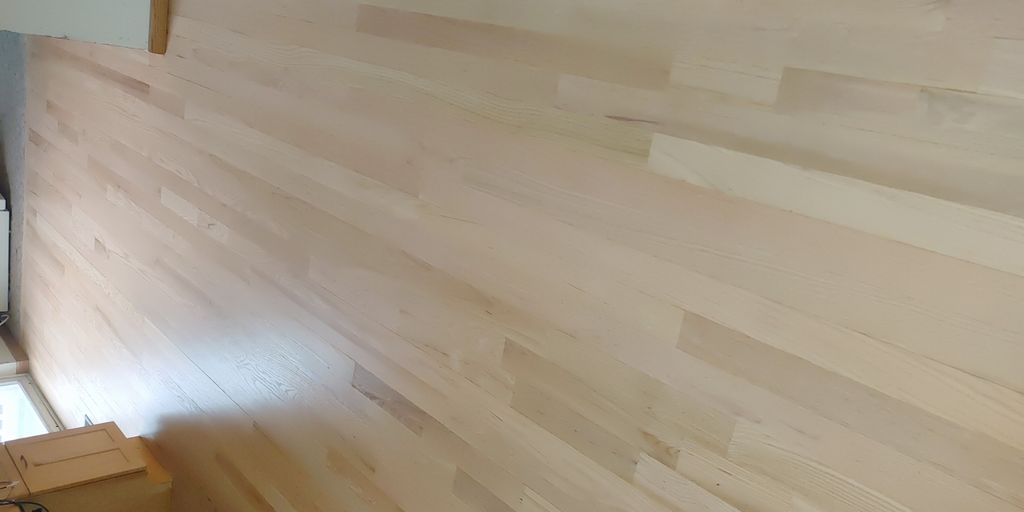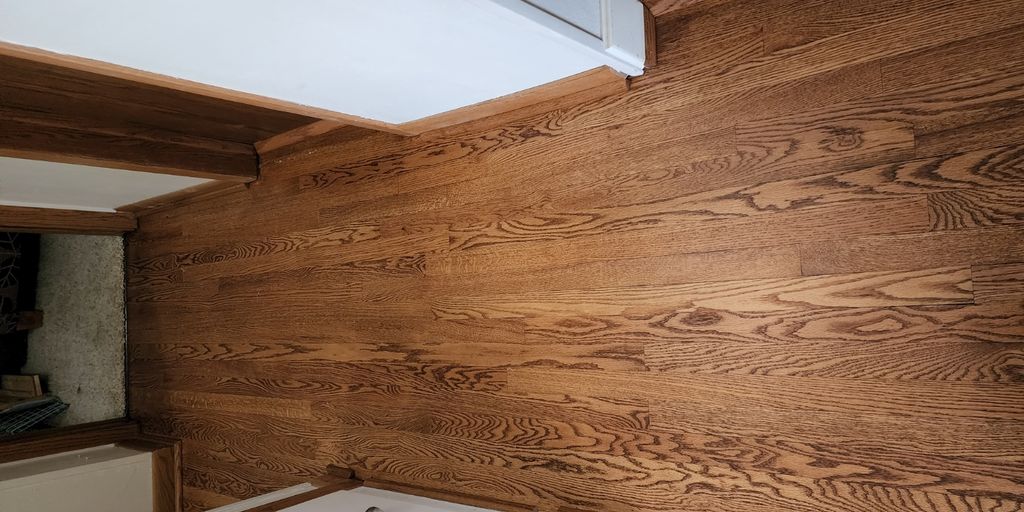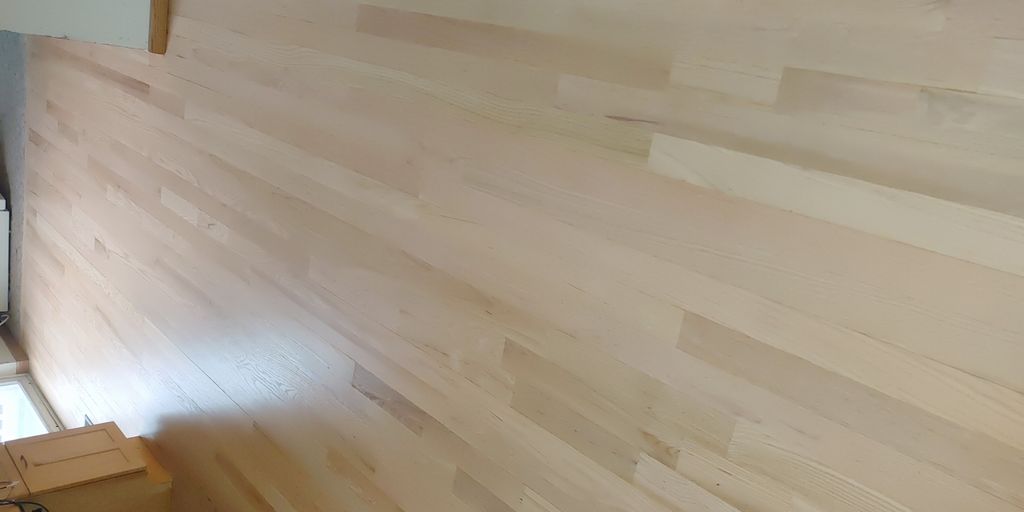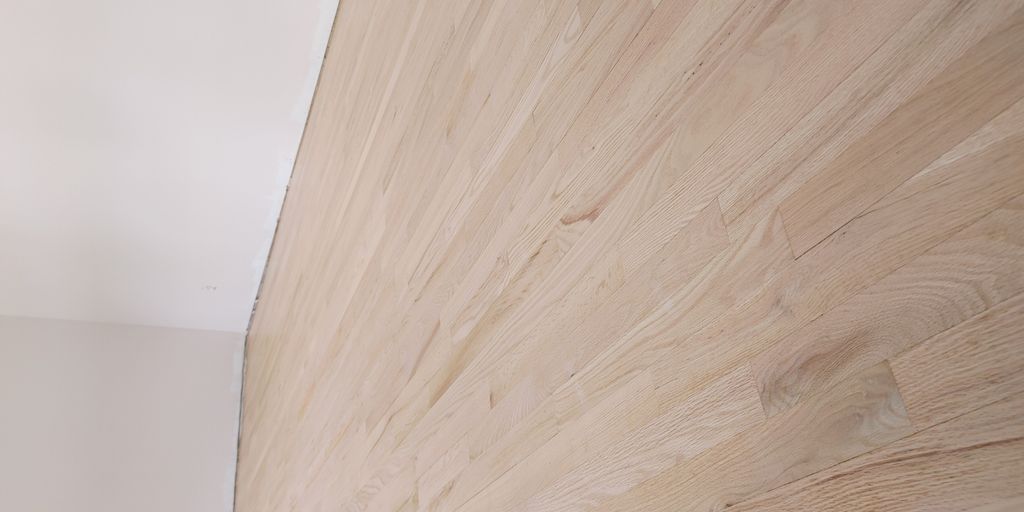Understanding Engineered Hardwood Flooring
What Makes Engineered Hardwood Different
Engineered hardwood is not your typical wood flooring. Unlike solid hardwood, which is made from a single piece of wood, engineered hardwood consists of multiple layers. The top layer is real wood, giving it that authentic look and feel, while the underlying layers are usually plywood or high-density fiberboard. This construction not only makes it more stable but also allows it to withstand changes in temperature and humidity better than its solid counterpart. This means it’s a great choice for areas like basements or kitchens where moisture might be a concern.
Thank you for reading this post, don't forget to subscribe!Benefits of Choosing Engineered Hardwood
When it comes to benefits, engineered hardwood offers quite a few. Here’s a quick rundown:
- Cost-Effective: Typically, it’s less expensive than solid hardwood, making it a budget-friendly option.
- Durability: Thanks to its layered construction, it handles heat and moisture better, reducing the risk of warping.
- Ease of Installation: You can install it over various types of subfloors, including concrete, and it’s often suitable for DIY projects.
- Versatility: It can be used with underfloor heating systems, expanding its usability in modern homes.
Common Misconceptions About Engineered Hardwood
Despite its advantages, there are some common misconceptions about engineered hardwood:
- Not Real Wood: Some people think it’s not real wood, but the top layer is genuine wood, offering the same aesthetic appeal.
- Limited Refinishing: While it can be refinished, it’s true that you can’t do it as many times as solid hardwood, due to the thinner top layer.
- Fades Easily: Like any wood product, it can fade if exposed to direct sunlight for long periods, but this is not unique to engineered wood.
Engineered hardwood is a smart choice for those who want the beauty of wood without the high maintenance and cost. Its design makes it a practical and stylish option for any home.
Exploring Local Options for Engineered Hardwood
Finding Reputable Local Suppliers
When you’re ready to upgrade your floors with engineered hardwood, the first step is finding a reputable local supplier. Supporting local businesses not only boosts your community’s economy but also provides you with personalized service and expert advice. Here are a few tips to help you find the best local suppliers:
- Ask for Recommendations: Start by asking friends, family, or neighbors who have recently renovated their homes. Personal experiences can provide valuable insights.
- Visit Showrooms: Take the time to visit local showrooms. This allows you to see the variety of engineered hardwood options in person and get a feel for the textures and finishes.
- Check Credentials: Ensure the supplier is licensed and has a good track record. Look for membership in professional associations related to flooring.
Comparing Local Showrooms and Big-Box Retailers
Choosing between local showrooms and big-box retailers for your engineered hardwood can be a bit of a dilemma.
- Local Showrooms: Offer a more personalized shopping experience and often have unique styles not found in larger stores. You get to deal directly with experts who can provide tailored advice based on your needs.
- Big-Box Retailers: Typically offer competitive pricing and a wide range of options. They are convenient for those who prefer a one-stop-shop for all their home improvement needs.
When deciding, consider what’s more important to you: personalized service or a broad selection and potentially lower prices.
The Role of Online Reviews in Your Decision
In today’s digital age, online reviews play a crucial role in making informed decisions about where to purchase your engineered hardwood. Here’s how to leverage them effectively:
- Read Multiple Reviews: Don’t rely on just one source. Check multiple review sites to get a balanced view of the supplier’s reputation.
- Look for Consistency: Pay attention to repeated praises or complaints. Consistent feedback can indicate genuine strengths or weaknesses.
- Consider the Context: Some negative reviews may be based on specific, one-time issues, so consider whether these are relevant to your needs.
Online reviews can help you narrow down your options, making it easier to choose the right local flooring professional for your project. Whether you’re looking for installation, refinishing, or just need advice, local hardwood flooring services can guide you to make the best choice for your home.
Key Features to Look for in Engineered Hardwood
Durability and Longevity
When it comes to engineered hardwood, durability is a standout feature. Unlike solid hardwood, engineered options are designed to handle more wear and tear. Thanks to their layered construction, they’re less likely to warp in areas with high humidity, making them ideal for basements and kitchens. While you might not be able to refinish them as many times as solid wood, they still offer a long lifespan with proper care.
Aesthetic Versatility
Engineered hardwood floors come in a wide variety of styles and finishes, offering aesthetic versatility that can suit any home decor. Whether you prefer the classic look of oak or the exotic appeal of bamboo, there’s something for everyone. Plus, engineered wood can mimic the appearance of more expensive wood types, providing a high-end look without the hefty price tag.
Environmental Considerations
If you’re eco-conscious, engineered hardwood is a smart choice. Many manufacturers use sustainable practices, ensuring that the wood comes from responsibly managed forests. Additionally, the production process often utilizes less wood than solid hardwood, reducing impact on natural resources. Look for options with certifications like FSC (Forest Stewardship Council) to ensure you’re making an environmentally friendly choice.
Choosing engineered hardwood means balancing style, durability, and environmental responsibility, making it a wise investment for your home.
For more insights on maintaining your hardwood floors, explore our expert tips on restoration and maintenance. Discover the latest hardwood flooring trends and eco-friendly choices to enhance your home’s style and sustainability.
Installation Tips for Engineered Hardwood
Preparing Your Home for Installation
Getting your home ready for engineered hardwood installation is like setting the stage for a big show. Start by clearing the room of all furniture and decorations to ensure a smooth process. Check the subfloor for any imperfections—make sure it’s clean, dry, and level. If there are bumps, sand them down; if there are low spots, fill them in. Moisture is a big enemy here, so ensure the area is dry to avoid future warping or damage.
DIY vs. Professional Installation
Thinking about doing the installation yourself? It’s definitely possible with the right tools and a bit of patience. Here’s a quick checklist:
- Gather Your Tools: Make sure you have a saw, measuring tape, and a nail gun ready.
- Acclimate the Wood: Let the wood sit in the room where it will be installed for a few days to adjust to the humidity.
- Follow Instructions: Each type of engineered hardwood might have specific installation guidelines. Stick to them closely.
While DIY can save you some cash, hiring professionals might be a safer bet if you’re not confident. They bring experience and can handle tricky spots like corners and doorways with ease.
Post-Installation Care and Maintenance
Once your beautiful new floor is in place, keeping it in top shape is key. Follow these simple steps:
- Regular Cleaning: Use a soft broom or vacuum to keep dust and dirt at bay.
- Protective Measures: Put felt pads under furniture legs to prevent scratches.
- Monitor Humidity: Wood likes a stable environment, so try to keep your home from getting too dry or too damp.
Remember, a little care goes a long way in preserving the beauty and longevity of your engineered hardwood floors. Whether you choose to go the DIY route or hire professional installation services, the end result will be a stunning addition to your home.
Cost Considerations for Engineered Hardwood
Understanding Price Variations
When it comes to engineered hardwood, prices can fluctuate based on several factors. The type of wood veneer, thickness of the top layer, and overall quality of the construction all play a role. Exotic wood species like Brazilian cherry often come at a premium compared to more common options like oak or maple. Additionally, the method of installation can impact costs—floating floors are generally less expensive to install than glue-down methods.
Budgeting for Installation
Planning your budget for installing engineered hardwood involves more than just the price of the materials. Consider the cost of underlayment, adhesives, and any additional tools if you’re opting for a DIY approach. Hiring professionals, like Cedar Oak Flooring for expert installation, might seem pricier upfront but can save you headaches and potential repair costs down the line. Don’t forget to factor in any necessary prep work, such as leveling subfloors or removing old flooring, which can add to the overall expense.
Long-Term Value and Investment
Investing in engineered hardwood can significantly enhance your home’s value. This type of flooring offers a balance between the luxurious look of hardwood and the practical benefits of durability and moisture resistance. While the initial investment might be higher than other flooring options, the longevity and aesthetic appeal of engineered hardwood can make it a wise choice. It’s a flooring option that not only beautifies your home but also appeals to future buyers, potentially increasing resale value. For more insights into how hardwood flooring can boost your home’s worth, check out our guide on enhancing home value with hardwood.
Choosing engineered hardwood is about more than just upfront costs; it’s about making a decision that benefits your home in the long run. From the warmth it brings to the rooms to its durability, it’s an investment in both style and substance.
Popular Styles and Trends in Engineered Hardwood

Classic vs. Contemporary Styles
When it comes to engineered hardwood, styles range from timeless classics to sleek modern designs. Classic styles often feature rich, warm tones and traditional patterns like herringbone or chevron. These styles bring a sense of elegance and history to any room. On the flip side, contemporary styles lean towards minimalism with lighter, neutral shades and simpler grain patterns. Whether you prefer the charm of classic oak or the clean lines of modern maple, engineered hardwood offers something for every taste.
Color Trends to Watch
Color choices in engineered hardwood are evolving. Natural tones are still a favorite, highlighting the wood’s grain and texture. But there’s a growing trend towards bolder colors like deep browns and even blacks, which add a dramatic flair to your space. Grays and whites are also popular, offering a modern and airy feel. These colors can transform a room, making it feel more open and inviting.
Innovative Finishes and Textures
The finish of your engineered hardwood can completely change its look and feel. Matte finishes give a more natural appearance, perfect for a rustic vibe. High-gloss finishes, however, are all about luxury and modernity. Textures like wire-brushed or hand-scraped add depth and character, making each plank unique. These finishes not only enhance the visual appeal but also contribute to the floor’s durability, making it a practical choice for busy households. Embrace these trends to create a space that’s both stylish and functional.
Maintaining Your Engineered Hardwood Floors

Routine Cleaning Tips
Keeping your engineered hardwood floors looking their best starts with regular cleaning. Sweep or vacuum frequently to remove dust and debris that can scratch the surface. Use a damp mop with a cleaner specifically designed for wood floors to maintain the shine without damaging the finish. Avoid excessive water, as it can seep into the seams and cause damage over time.
Handling Scratches and Dents
Even with the best care, scratches and dents can happen. For minor scratches, a simple touch-up pen or a wood filler can do wonders. For deeper dents, consider professional floor refinishing services, which can restore your floor’s original beauty without the need for a complete overhaul. Regularly inspect your floors and address any issues promptly to prevent them from worsening.
When to Consider Refinishing
Engineered hardwood floors can only be refinished a few times, so it’s crucial to know when it’s necessary. If your floors are looking dull or have significant scratches that simple repairs can’t fix, it might be time to refinish. Consult with a professional to assess the condition of your floors and discuss the best approach to bring them back to life.
Taking care of your engineered hardwood floors not only keeps them looking great but also extends their lifespan, making them a smart investment for your home. With the right maintenance routine, you can enjoy their beauty and durability for years to come.
The Environmental Impact of Engineered Hardwood
Sustainable Sourcing Practices
When you’re thinking about engineered hardwood, it’s important to consider where the wood comes from. Many manufacturers now focus on sustainable sourcing, meaning they harvest wood in ways that protect forests and the wildlife that lives there. Look for products with certifications like the Forest Stewardship Council (FSC) label, which ensures the wood is responsibly sourced. Knowing that your flooring is eco-friendly can make your home feel even more special.
Eco-Friendly Alternatives
If sustainability is a top concern, there are alternatives to traditional hardwood that are worth considering. Bamboo and cork are two popular options. Bamboo grows super fast, making it a renewable resource, and it’s incredibly durable. Cork, harvested from the bark of cork oak trees without harming them, offers a soft feel underfoot and is naturally resistant to mold and mildew. These materials provide the beauty of wood without the environmental footprint.
Certifications to Look For
When shopping for engineered hardwood, certifications can guide you toward more environmentally friendly choices. The FSC certification is a big one, but there are others like the Programme for the Endorsement of Forest Certification (PEFC) and the Greenguard certification, which focuses on indoor air quality. These labels mean that the product meets certain environmental standards, helping you make a more informed choice.
Choosing flooring with these certifications not only benefits the environment but also ensures a healthier home for you and your family.
Enhancing Home Value with Engineered Hardwood
Why Homebuyers Love Hardwood
Homebuyers are often drawn to the timeless elegance of hardwood floors. It’s not just about looks; hardwood is also seen as a symbol of quality and durability. Many buyers are willing to pay a premium for homes with hardwood flooring because they know it’s a long-lasting investment. Hardwood flooring can significantly increase your home’s market value, making it a smart choice if you’re considering selling.
Comparing Engineered and Solid Hardwood
When deciding between engineered and solid hardwood, it’s important to weigh the pros and cons. Engineered hardwood is made with a top layer of real wood, backed by layers of plywood, making it more stable and less prone to warping. This makes it ideal for areas with fluctuating humidity. Solid hardwood, however, offers the ability to be sanded and refinished multiple times, potentially lasting longer in the right conditions. Both types can add value, but your choice might depend on specific needs like moisture resistance or longevity.
Maximizing Resale Value
To get the most out of your investment in hardwood flooring, consider these tips:
- Choose Neutral Colors: Neutral tones appeal to a wider range of buyers, making your home more attractive on the market.
- Opt for Professional Installation: A well-installed floor not only looks better but also lasts longer, enhancing your home’s appeal.
- Maintain Your Floors: Regular cleaning and occasional refinishing can keep your floors looking new, preserving their value.
Investing in hardwood flooring is about more than aesthetics—it’s about boosting your home’s value and appeal. Whether you choose engineered or solid wood, quality flooring can make a significant difference in your home’s marketability.
Common Mistakes to Avoid When Choosing Engineered Hardwood
Overlooking Subfloor Requirements
When you’re setting the stage for your new flooring, don’t skip the subfloor prep. A solid foundation is key to a successful installation. Ensure your subfloor is clean, dry, and level before proceeding. Any unevenness can lead to creaky floors or even damage the wood over time. It’s not just about looks; a poor subfloor can ruin the longevity of your investment.
Ignoring Moisture Levels
Engineered hardwood is more resistant to moisture than solid wood, but it’s not invincible. Pay attention to the humidity levels in your home. High moisture can cause the boards to warp or buckle, especially if installed in basements or bathrooms. Consider using a moisture barrier or dehumidifier to keep things in check.
Choosing the Wrong Finish
The finish on your engineered hardwood isn’t just about aesthetics—it’s about protection too. Some finishes are better suited for high-traffic areas, while others might offer more shine but less durability. Think about your lifestyle: do you have pets or kids? If so, you’ll want a finish that can withstand scratches and scuffs. Selecting the right finish can save you headaches down the road.
Investing in engineered hardwood is a smart choice for many homeowners, but it’s important to avoid these common pitfalls. Taking the time to prepare properly and choose wisely will ensure your floors look great and last for years to come.
The Role of Engineered Hardwood in Interior Design
Creating Cohesive Spaces
Engineered hardwood flooring can be the secret ingredient to tying a room together. Its ability to mimic the natural beauty of solid wood, while offering more durability, makes it a great choice for open-plan homes. The continuity of wood flooring can visually expand spaces, making them feel more connected and harmonious.
Pairing with Other Materials
One of the standout features of engineered hardwood is its versatility. Whether your home is filled with sleek metal fixtures or soft textiles, this flooring can complement any style. Consider pairing light-toned wood with dark stone countertops for a striking contrast or using warm wood tones to balance out cool, industrial elements.
Adapting to Different Room Functions
Engineered hardwood isn’t just about looks; it’s also about practicality. Its construction makes it suitable for rooms where solid wood might not be ideal, such as basements or kitchens. Moisture resistance means you can use it in areas prone to spills or humidity without worrying about damage. Plus, it works well over radiant heating systems, making it a cozy addition to living rooms and bedrooms.
Engineered hardwood flooring offers a blend of beauty and function. It’s a versatile choice that adapts to various design needs, providing a stylish and practical solution for modern homes. When planning your next renovation, consider how this type of flooring can enhance your space.
Engineered hardwood is a fantastic choice for anyone looking to enhance their home’s style. It combines beauty with durability, making it perfect for any room. If you want to learn more about how engineered hardwood can transform your space, visit our website today!
Conclusion
In the end, choosing the right engineered hardwood flooring is like picking out a comfy couch for your living room. It’s gotta feel right, look good, and fit your lifestyle. Whether you’re drawn to the classic charm of oak or the sleek look of maple, there’s something out there for everyone. Remember, it’s not just about the looks—think about how it’ll hold up with kids, pets, and the occasional spill. Take your time, do some homework, and maybe chat with a local flooring expert. With the right choice, your floors will not only look great but also add a cozy touch to your home for years to come. Happy flooring!



